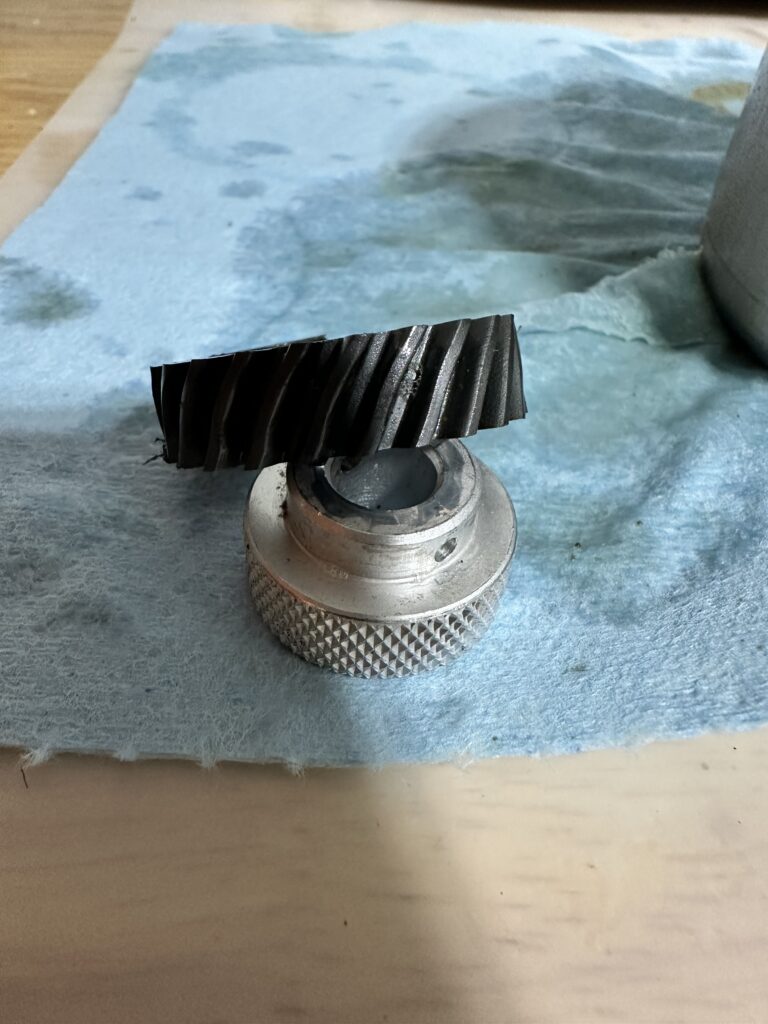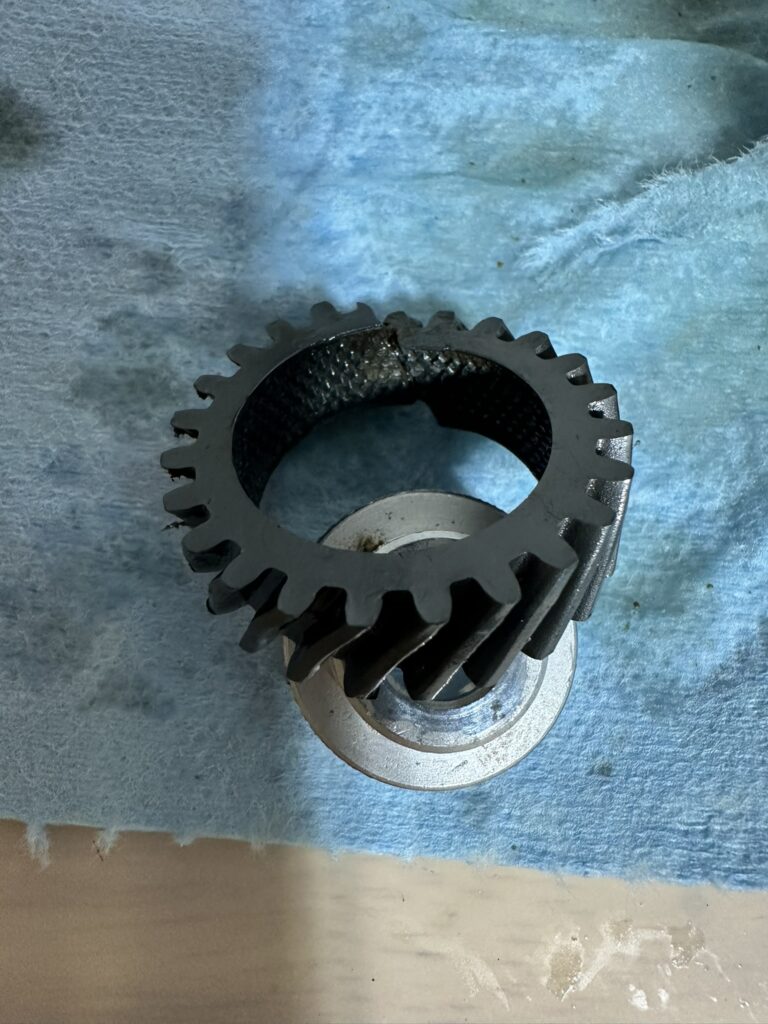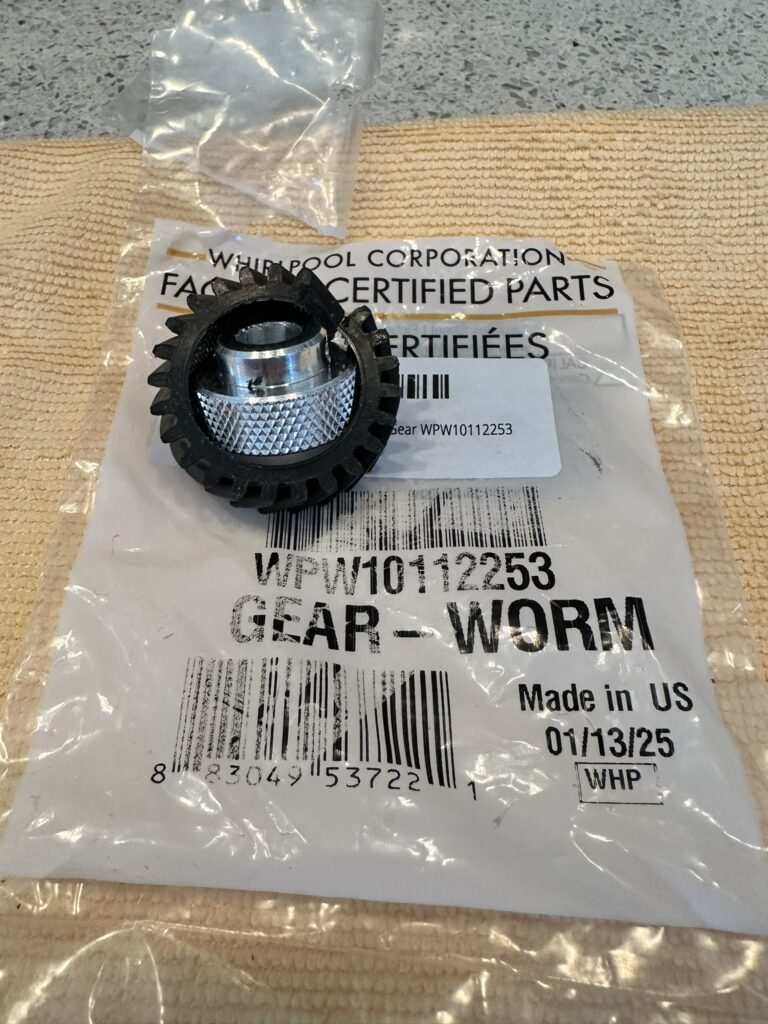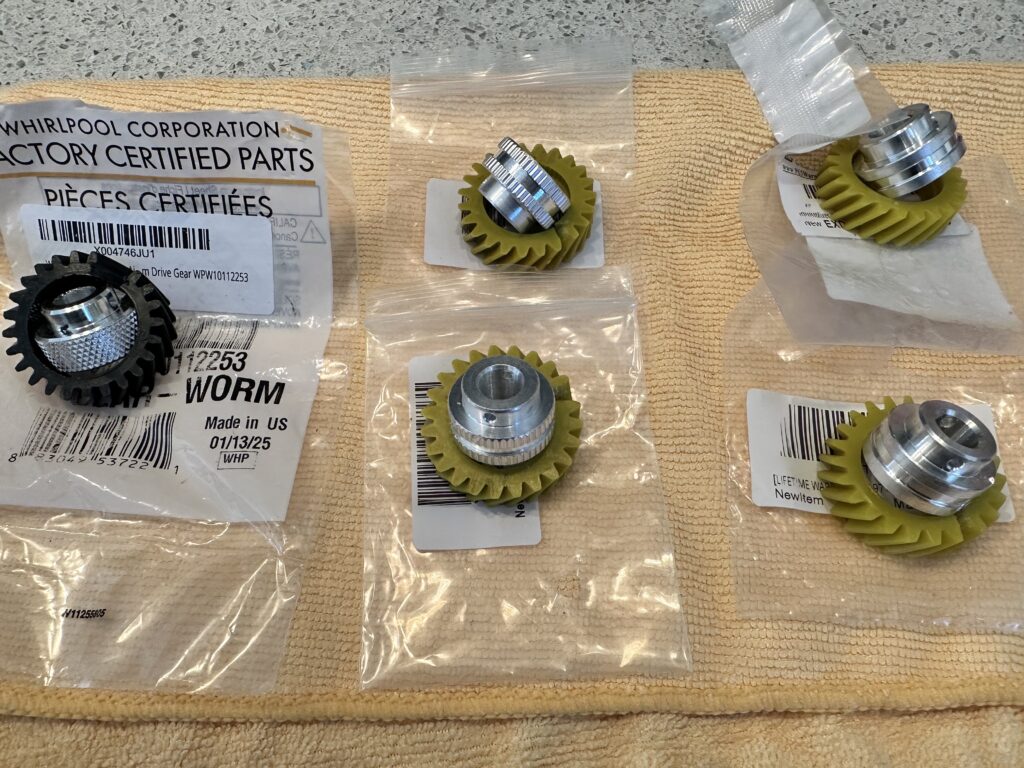The KitchenAid mixer parts market is chock full of imitations, knockoffs, and replicas; and sometimes it’s hard to know which ones are OK and which ones are not.
The safest course of action is always to get the genuine factory part from a trusted supplier. Sometimes this may cost a little more, but it works out in the end because the part will last longer and quite often work better.
Here’s an example: the “sacrificial” worm follower gear used in K45/K5-type machines. This gear has a nonmetallic helical tooth ring molded on to an aluminum hub.
On the genuine factory part, the hub is knurled so that the molded ring grips it very tightly, and resists slipping. These photos show an old gear (1990s vintage) that failed; it was worn and under excess load the plastic actually cracked and came off the hub.


Here’s a brand new factory part (manufactured in 2025), showing the same structure.

Now, here’s a rogues’ gallery showing the factory part and various cheap aftermarket gears which I bought on Amazon and cut apart to show their internal structure. (Note: I made an effort to obscure or blur out any identifying details in the aftermarket parts, because the goal is not to shame individual sellers or suppliers.)

All of these gears attempt to replicate the yellow material that Whirlpool used on these gears for a time. This gives them an appearance of credibility, but as can be seen by their hub design, none of them are made to the factory standard.
The gears on the right have smooth hubs, and under any nontrivial load, the tooth ring just slips and spins around the hub. When you take the mixer apart to figure out why the beater isn’t moving under load, you’ll think the gear is OK because there isn’t any obvious damage; but it’s not fit for service (and wasn’t in the first place).
The gears in the middle have ridges on on the hub, which is a low-budget attempt to replicate the factory knurling. However, there’s not as much surface area exposed to grip the tooth ring, so while these gears might hold up longer, there’s no way to know.
(And, to the point, when you buy something other than the genuine factory part, you have absolutely no way to know whether it was manufactured to the OEM standard.)
What About Those Metal Gears?
Some sellers are pushing a metal gear to replace this particular part. This should be avoided at all costs.
Part of the function of the nonmetallic gear is to function as a “mechanical fuse”; using the metal gear in this location would be like putting a penny in your fuse box instead of an actual fuse. If something jammed the beater or a hub attachment, you’d end up actually burning out the motor or severely damaging the gears.
Also, the metal ones grind themselves up and fill the grease with metal particles. This accelerates wear on the other drivetrain components.
Finally, the metal gear will wear out the “worm” on the motor shaft, requiring replacement of the armature which would otherwise be unnecessary.
Model types which use a metal “sacrificial” gear (or no sacrificial gear at all) are designed for it; they have electronic speed controls which can detect motor stalls and stop the machine before damage occurs.
You can read more about plastic vs. metal gearing here.
Where Can I Buy Genuine Parts?
Here’s a list of recommended suppliers. These are all established businesses which sell genuine parts at competitive prices, without excessive markup or cheap knockoffs.